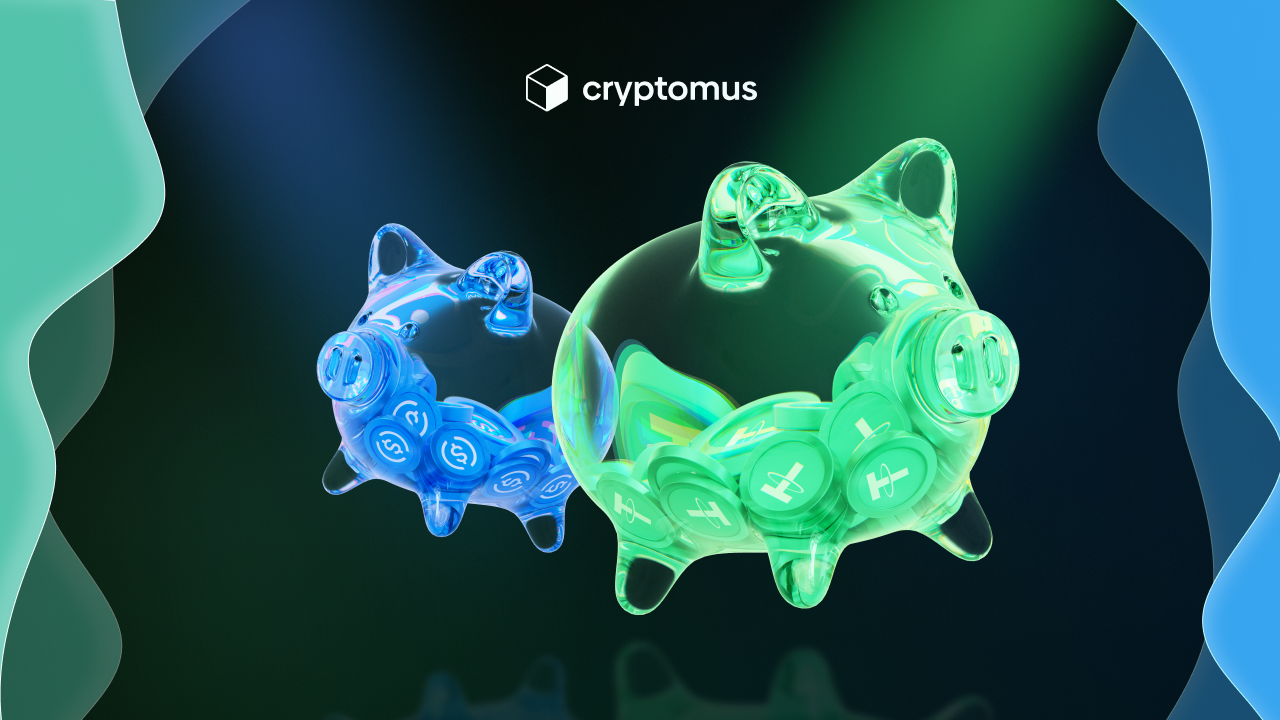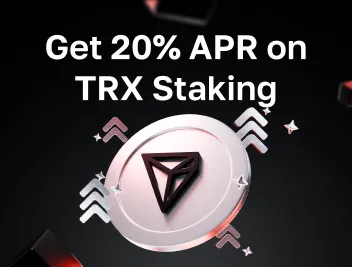
USDT vs USDC: What Is The Difference?
USDT and USDC: how often do people come across these crypto abbreviations? They really became the “kings” among all stablecoins. In this article, we explore what cryptocurrency is the best to use, what factors we should pay attention to and what is the difference between USDT and USDC. Let’s see!
The Fundamental Understanding of USDT and USDC
USDT (Tether) and USDC (USD Coin) are the most famous stablecoins pegged to the US dollar in a 1:1 ratio, so the rate of these tokens is equal to 1 dollar. Both USDT and USDC lead by a wide margin among many other cryptocurrencies in terms of capitalization and trading volume in monthly and daily terms.
These outstanding stablecoins bridge the gap between crypto and fiat currencies. Thanks to them, investors can trade without experiencing the problems associated with the volatility of regular cryptocurrencies. Additionally, crypto-enthusiasts get the opportunity to conduct fast and reliable transactions on the blockchain using USDT or USDC.
It’s also important to note that these stablecoins have different issuers: USDT is issued by Tether Limited, while USDC is issued by Circle, a regulated financial technology company.
So, we've already understood the basic specifics of these two stablecoins, and now we’re ready to start our comprehensive analysis.
USDT vs. USDC: What Are The Key Similarities?
There is a lot of talk about differences between USDT vs USDC, but in order to analyze the differences qualitatively, you need first to understand the similarities as well. There are a few key similarities that bring these ones closer together.
- Similar types of tokens. USDT and USDC are both stablecoins, which aim to maintain the stability of their price, which is pegged to the US dollar. Stablecoins are a type of cryptocurrency that, unlike Bitcoin or Ethereum, have a fixed binding of their value to traditional financial assets.
- Common purpose. The main idea of stablecoins is to provide the cryptocurrency market’s users with the opportunity to use a stable digital asset, the rate of which is tied to the US dollar. It does not experience such intense volatility as other cryptocurrenciesdo.
- Similar applications and support. Both tokens can be used to purchase cryptocurrencies and other assets on cryptocurrency exchanges. USDT and USDC are perfect for trading, serving as a convenient and stable base asset. They can be easily purchased with fiat currency and then used for trading a variety of cryptocurrencies (e.g., BTC/USDT or BTC/USDC).
As we can see, these popular stablecoins have a lot in common but nothing can be so simple. USDT and USDC are absolutely not the same things. To make sure of it, let’s explore their differences further.
USD Coin vs. Tether: What Are The Key Differences?
What is the difference between USDC and USDT? No matter how similar these two coins are in name, type, or other characteristics, they still have significant differences that must always be kept in mind.
Transparency and control issues, ways of providing price stability, release time and their issued blockchains are the key differences between USDT and USDC tokens. Now, let’s get into these aspects a little bit closer.

Launch Date And Issuers
USDT is the first stablecoin to be widely distributed and was created in 2014 by Tether Limited, so that’s why USDT is also called Tether. The USD Coin, appeared in 2018. It was created by the CENTRE consortium, which includes two large American companies from the field of cryptocurrencies — Coinbase and Circle.
Control And Transparency
Tether Limited produces USDT and covers all the control of its management so no third parties can influence the management and distribution. In the case of USDC, from the very beginning, the CENTRE's activities were under the constant control and regulation of the US authorities and banks. Therefore, it significantly increases the confidence and demand of investors and financial regulators in the USDC.
Regulatory Compliance
A major distinction between USDC and USDT is their regulatory status. USDC is widely regarded as more regulatory compliant and is officially permitted in a larger number of jurisdictions, including the European Union under the MiCA regulation. Meanwhile, USDT faces regulatory challenges and restrictions in certain regions, such as being effectively banned under EU MiCA rules due to transparency and compliance concerns.
Adoption And Market Usage
USDT remains the most widely used stablecoin worldwide, especially in cryptocurrency trading. Its trading volume is currently about six times higher than USDC’s, making it the preferred stablecoin for exchanges and traders who prioritize liquidity and widespread acceptance.
Price Stability Mechanism
USDT uses a reserve system, where each token is backed by a mix of assets (not limited to US dollars) held by Tether. The exact composition of these reserves has raised concerns due to a lack of full transparency. USDC uses a capital control model, where each token is backed by actual US dollars held in regulated bank accounts. This setup allows for clearer reporting and higher transparency, with monthly audits publicly available.
Blockchain Support
Both USDT and USDC are available on multiple blockchain networks, but they support different sets of blockchains.
USDT is issued on Ethereum (ERC-20), TRON (TRC-20), and other networks like BNB Chain, Polygon, and Avalanche. Its TRON (TRC-20) version is especially popular due to low fees and fast transactions. In contrast, USDC does not support the TRON network. Instead, USDC is natively available on 23 other blockchains, including Ethereum, Solana, Arbitrum, Base, Sui, and Stellar — making it a preferred option for regulated platforms and modern DeFi ecosystems.
USDT vs. USDC: Which Is Safer?
If you had to choose between USDT and USDC, which of them would be safer? Security is the main issue in any deal, mainly if it’s devoted to cryptocurrency. What's the difference between USDС and USDТ in the security issue? Let’s check!
From the security and reliability point, USDT periodically had questions due to the opacity of the structure of Tether's reserves. As we’ve already mentioned about USDT, it’s fully controlled by its mother company, Tether Limited, so this raises some transparency and security issues to solve. However, it still remains a stablecoin despite some problems with reserves, which directly relate to the company's policy.
USDC, on the contrary, has a more transparent support system and clarity, which is more attractive for users in some cases. Additionally, the USDC publishes monthly audit reports confirming the availability of full dollar coverage. All in all, we can say that USDC is relatively safer than its predecessor, USDT. It’s confirmed both by the well-coordinated functioning of the USD Coin itself and the presence of a transparent support system.
Don’t forget to explore and check all possible risks before starting to work with any cryptocurrency. In a battle between Tether vs. USD Coin, do research and choose a suitable and reliable stablecoin for yourself.
USDC vs USDT: Which Stablecoin Is Better?
USD Coin and Tether are the most popular among stablecoins worldwide, but what made them so special? Having explored their similarities and differences, let’s now take a closer look at the key advantages and drawbacks of USDT and USDC:
| Criteria | USDT (Tether) | USDC (USD Coin) | |
|---|---|---|---|
| Benefits | USDT (Tether)- Highest liquidity - Larger market capitalization - More widely accepted on exchanges (easier to trade and invest) - User-friendly for trading and storage | USDC (USD Coin)- High reliability of reserves confirmed by regular audits - Support from legal entities and government-backed banks - Increased trust among investors and traders | |
| Drawbacks | USDT (Tether)- Insufficient transparency of reserve structure - Lack of regular third-party audits - Full dependence on the issuer’s policy (Tether Limited) - Potential risk of devaluation if reserve backing is compromised - Restricted or banned in certain countries due to regulatory concerns | USDC (USD Coin)- Lower liquidity compared to USDT (less convenient and accessible) - Less widespread among cryptocurrency users |
To sum up, USDT is generally preferred for everyday use due to its wider adoption and support for the TRC-20 protocol, which enables faster and cheaper transactions. However, if regulatory compliance and security are your top priorities, then USDC is the safer choice and deserves closer consideration. That’s all for now! We hope that after reading, your choice between these two popular stablecoins will be easier and faster. Choose your favorite stablecoin together with Cryptomus!
Rate the article








comments
0
You must be logged in to post a comment